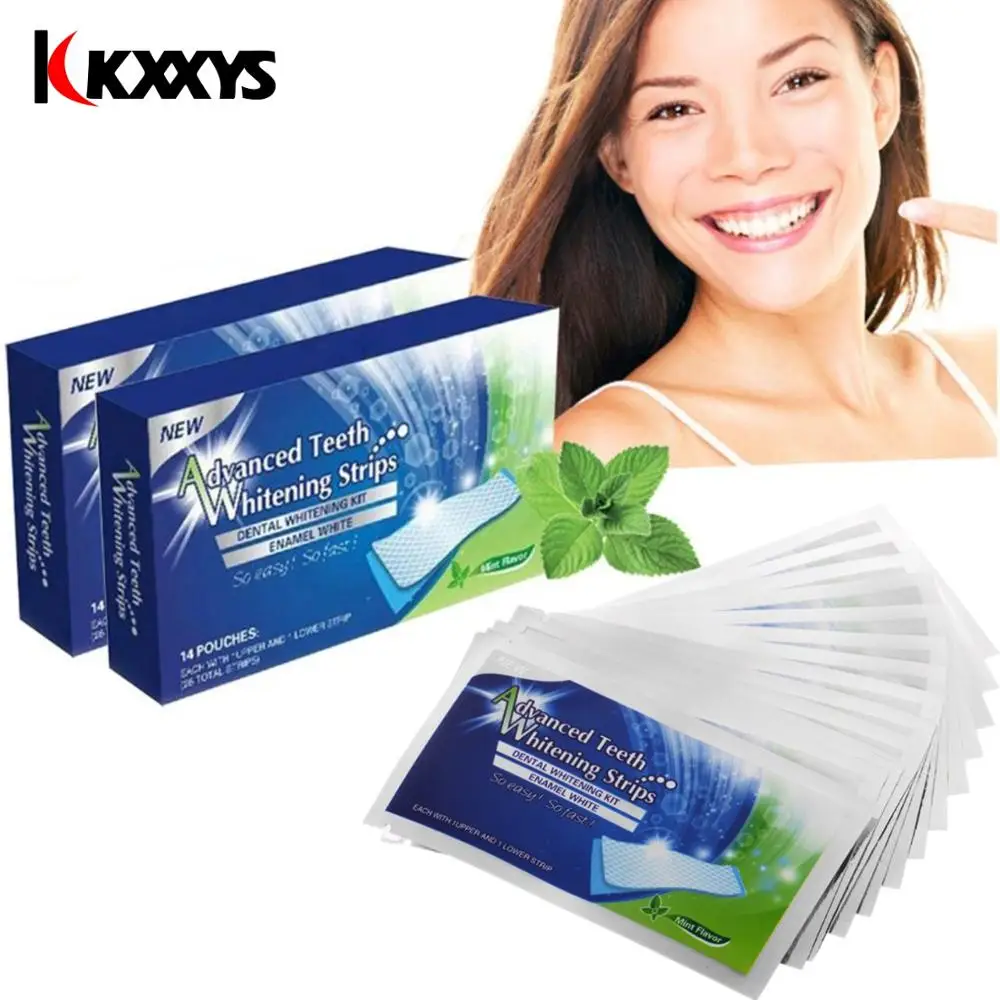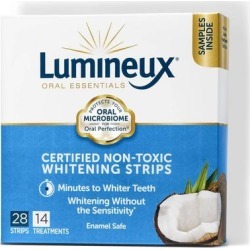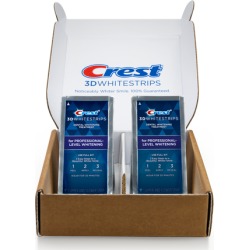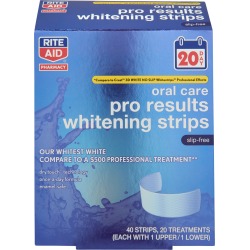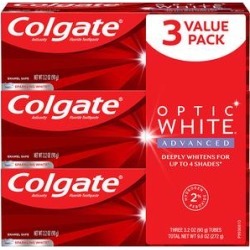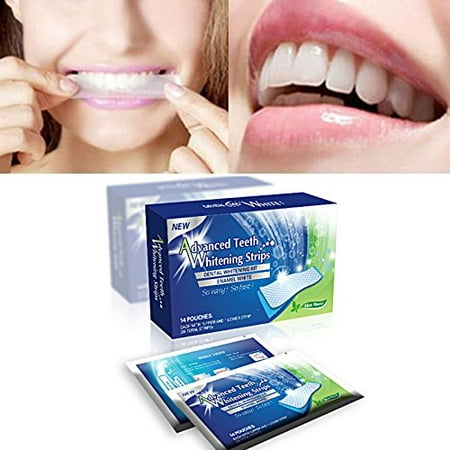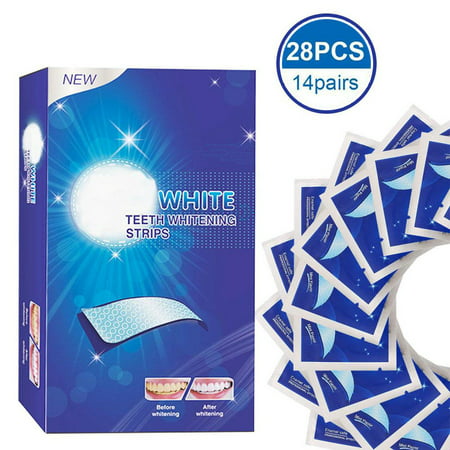Do whitening strips work?| What are the 5 risks?
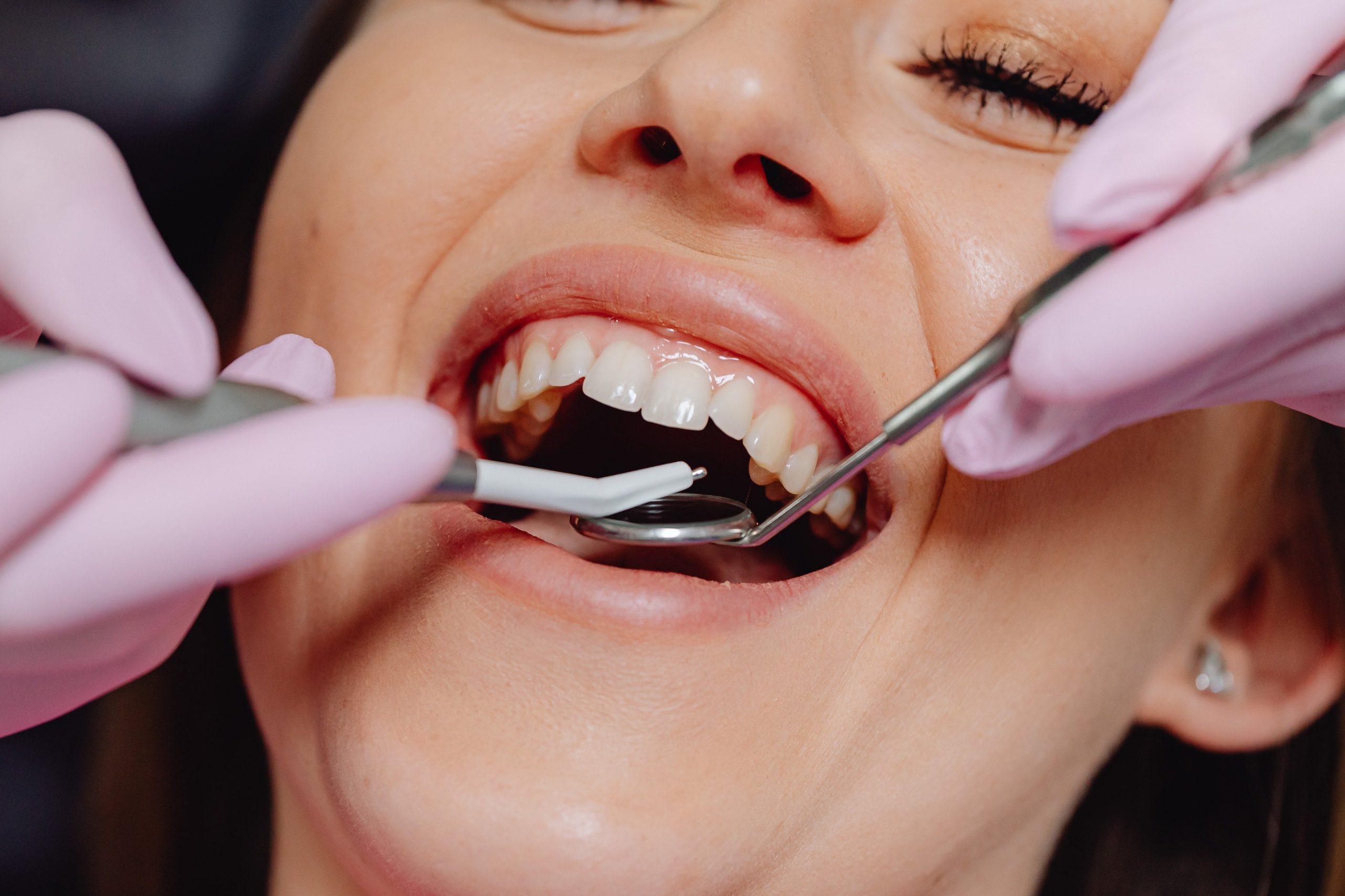
Do whitening strips work immediately? A typical dental product called whitening strips may be able to help whiten and remove stains from the teeth. They can be a simpler and less expensive option even though they are not as effective as treatments received at a dentist’s office. However, consumers should be cautious when using the strips and consider the components.
- Understanding tooth whitening strips
- Do whitening strips whiten teeth?
- Does Teeth Whitening Damage Your Teeth?
- Whitening strips can indeed make teeth whiter.
- Extrinsic staining
- Intrinsic staining
- Extrinsic and intrinsic stains are both the focus of whitening strips.
- Ingredients are significant for determining efficacy.
- How soon can results be expected?
- Precautions and risks to be aware of
- Advice on maintaining white teeth
- Strategies for keeping your teeth white
- Price comparisons for the 12 best whitening strips
- How Effective Are Teeth Whitening Strips?
- Use of teeth whitening strips: risks
- Alternative Whitening Method for Teeth
- Don’t Use These Teeth Whitening Techniques
- Frequently asked questions
- Takeaway
Understanding tooth whitening strips
The state of one’s teeth may significantly impact how one feels about themselves. Therefore, age-related tooth whitening is inevitable, but there are several ways to delay it. One of these methods is whitening strips, which are available over-the-counter (OTC) and can assist with stain removal and tooth whitening.
People directly apply strips for teeth whitening. Although the strips include chemicals like hydrogen peroxide or carbamide peroxide, the American Dental Association (ADA) asserts that they are safe and effective if they have the ADA Seal of Acceptance. However, using any whitening chemicals could have unfavorable effects on people.
Do whitening strips whiten teeth?
There are probably a lot of items at your neighborhood pharmacy that promise to whiten your teeth. Products for at-home teeth whitening first became accessible in the 1980s, and today they are widely available. But do whitening strips and other products genuinely work to whiten teeth? Yes, to answer briefly. Teeth whitening strips can function in as little as a few days and can whiten your teeth by one or two shades.
However, over-the-counter solutions are frequently less successful than in-office dental whitening procedures. They also carry some dangers, like increased gum sensitivity and dental sensitivity. Read on to discover how tooth whitening strips function and which products are the most efficient.
Does Teeth Whitening Damage Your Teeth?
Whitening strips can indeed make teeth whiter.
Teeth whitening strips work by eliminating stains with hydrogen peroxide or carbamide peroxide. Hydrogen peroxide is produced when carbamide peroxide interacts with water. The peroxides in whitening strips infiltrate the dentin layer more profoundly than the enamel layer of your teeth, where they bleach chromogens. Chromogens are pigmented chemicals that can be found inside and outside teeth and coloring them. Extrinsic and intrinsic staining are the two types of staining that can be categorized.
Extrinsic staining
Extrinsic discoloration affects the exterior of your tooth and is frequently brought on by outside elements like:
- Smoking.
- Certain meals, and beverages, including coffee, wine, and dark berries.
- Antibiotics.
- Exposure to metals like copper or iron.
Intrinsic staining
The interior of your tooth is affected by intrinsic staining. Things like: bring it on
- Age-related enamel erosion
- Genetics
- Antibiotics
- Exposure to high levels of fluoride
- Tooth development disorders
Extrinsic and intrinsic stains are both the focus of whitening strips.
Both kinds of stains are susceptible to whitening strips. The colors most quickly removed by bleaching are often those brought on by age, heredity, smoking, or coffee. Aging stains that are yellowish also heal nicely. The optimum time to utilize whitening strips maybe when you only need to slightly touch up the color of your teeth. A dentist may provide you with a personalized treatment most suited to your requirements and utilize stronger bleaches.
Ingredients are significant for determining efficacy.
Most at-home whitening strips use hydrogen peroxide or carbamide peroxide to remove stains from your teeth. On the other hand, some stripes may contain chlorine dioxide, particularly those used on cruise ships or in some beauty parlors. Although its safety is disputed, chlorine dioxide is promoted as a safer and more effective substitute. However, your tooth enamel may be stripped by chlorine dioxide. Additionally, it can leave your teeth more prone to sensitivity and restain.

How soon can results be expected?
The market has a wide variety of whitening strips, and each brand has different instructions.
Usually, you use whitening strips for two weeks, twice a day. Typically, you leave them on for a total of 30 minutes. As a result of tooth lightening, which can be seen in as little as a few days, your teeth may become one or two colors lighter. Some products might require one application each day to get the same results.
Precautions and risks to be aware of
Strips for teeth whitening irritate the gums and enhance tooth sensitivity. However, these symptoms are often not severe.
Usually, tooth sensitivity begins during treatment and lasts for several days. Gum sensitivity may appear the day after treatment and often persists for several days.
The amount of peroxide in the whitener and how long you keep them on both affect how likely you are to experience these harmful effects.
High hydrogen peroxide concentrations can weaken the tooth structure and increase the risk of demineralization. Demineralization is the process through which your teeth lose calcium and other minerals. Studies have shown that using 35 percent carbamine peroxide causes structural damage to the enamel. The color of pre-existing fillings, crowns, bridges, or implants won’t be altered by teeth whitening, and it should be noted. only logical
Advice on maintaining white teeth
You may prevent stains and improve your tooth health by practicing proper oral hygiene and limiting your intake of specific foods. Here are some precise methods for maintaining pearly whites.
Strategies for keeping your teeth white
Eat foods that cause stains in moderation. Some foods and beverages are renowned for discoloring teeth, including coffee, red wine, dark berries, and sodas.
- Apply a straw. A straw can assist you in preventing having the beverage come into touch with your teeth when drinking something that could potentially discolor your teeth.
- You should floss. After ingesting food or beverage that stains teeth, brushing your teeth afterward might lessen the staining’s impact. Also, you can check if Eating after brushing your teeth at night is good.
- Maintain appropriate dental hygiene practices.
- Consume a lot of calcium. Getting enough calcium via your diet may keep your teeth strong and lower your risk of cavities.
- Consume sugar in moderation. When harmful bacteria in your body come into contact with sugar, they release acid. Your teeth are dissolved by this acid, which can cause tooth decay.
- Avoid using tobacco products, including cigarettes. The nicotine in tobacco products can leave a yellow stain on your teeth. In addition, your teeth could start to appear brown after prolonged use.
As a touch-up procedure, use bleaching products. To maintain your teeth white, you shouldn’t just use whitening products. They can, however, be used to cover up minor discoloration.
Price comparisons for the 12 best whitening strips
- All prices mentioned above are in United States dollar.
- This product is available at Walmart.com, Tomtop, zulily.com, Target, Rite Aid, Crest White Smile, samsclub.com.
- At walmart.com you can purchase Teeth Whitening Strips, 28 White Strips Teeth Whitening Kit, Non-Sensitive 14 Sets Teeth Whitener for Tooth Whitening, Helps to Remove Smoking Coffee Soda Wine Stain for only $9.99 , which is 83% less than the cost in samsclub.com ($59.98).
- The lowest price of Crest Whitening Emulsions Teeth Whitening Treatment Kit was obtained on 12/22/2025 8:42 PM.
How Effective Are Teeth Whitening Strips?
Many purchase at-home teeth whitening strips rather than see the dentist for cosmetic bleaching to save money.
Cost vs power
It takes a while to notice results regarding the bleaching capability of at-home whitening strips. Even after using the strips for months, you won’t see a tiny fraction of the results from professional teeth whitening. A visit to the dentist may remove years’ worth of surface stains from your teeth, while at-home kits might only be able to remove a few colors. You might need to invest more money to avoid disappointment if you want massive results.
Cost Vs. Longevity
Crest White Strips and other teeth-whitening products are not intended to make teeth whiter permanently. Frequently, their benefits only endure for around six months before teeth start to deteriorate and yellow once more. Even though professional bleaching is not permanent, it will last much longer than DIY bleaching strips. You should be able to go years without coming back for whitening if you follow the aftercare kit that came with your bleaching package.
Spending $50 on less than six months’ worth of lightning isn’t a wise investment when you think about it. You might as well invest a few hundred dollars on a whitening product that is substantially stronger and longer-lasting. An at-home kit can be sufficient if you only need to make your already-white teeth brighter. In all other cases, dental bleaching is the best option.
Price vs convenience
You must visit the dentist’s office once for a single appointment if you want your teeth whitened there. Before you notice the effects of using strips at home, you might need to wear them for multiple days or several hours at a time. If you don’t have much time left in the day, it could be more convenient to visit the dentist all at once and get your teeth whitened. Then you may go with a stunning, assured smile that will make everyone envious.
Crest White Strips: How Do They Whitened Teeth?
Although Crest White Strips come in various flavors, you’ll find that they all share hydrogen peroxide as an active component. However, when applied to teeth as a gel, peroxide oxidizes the stain particles it comes into touch with, removing discoloration and lightening the tooth.
Crest strips include a different amount of peroxide than what you could find in a professional system. It’s like contrasting a doctor’s prescription with a drug available over the counter. Both can function, but one will be more effective than the other.
Whitening occurs over several days when white strips are worn against the teeth as instructed. But you won’t get excellent results if the garment is worn improperly and the instructions are not followed. So how successfully do Crest White Strips work? When put on flat against your teeth for 10–14 days, for 30–60 minutes each day.
Use of teeth whitening strips: risks
There are a few critical hazards that everyone using whitening strips ought to know about:
1) Tooth-Colored Restorations
Your enamel will get brighter when you whiten your teeth, but your dental work won’t. Those restorations will maintain their color during your whitening program if you have white fillings or crowns in the front of your smile. After you’ve whitened your teeth, they’ll either stand out from them, or your dentist needs to update them to a more suitable shade.
2) Tooth Sensitivity
Tooth soreness is the most prevalent side effect of teeth whitening. Thankfully, there are several measures you may take to reduce your risks. First, think about using whitening strips only once every other day. Another piece of advice is to use sensitive toothpaste in the weeks preceding your treatment, throughout those weeks, and then for a week or two afterward.
3) Bleached Gums
The soft gum tissues are not intended for use with whitening strips. Your gums may become chemically burned or bleached out if they lay against them for an extended period.
4) Splotchy Whitening (Spots On Teeth)
It’s not unusual for certain tooth surfaces to whiten more quickly than others. If you have regions of demineralization, you may initially see splotchy or uneven color. Most of the time, they will disappear after you finish your whitening process.
Alternative Whitening Method for Teeth
Over-the-counter teeth whitening might not be able to give you the results you want if your teeth are dark and discolored or if you’ve had a lot of dental treatment done in the past. The most satisfactory results come from professional teeth whitening when stubborn stains are an issue. In addition, you may effectively target severe tooth discoloration with them because they are considerably more concentrated.
However, if teeth whitening is not recommended or you have extensive dental treatment in your “smile zone,” porcelain crowns or veneers can be a better option. Both have the power to alter how your teeth look drastically. Everything may be customized to your tastes, down to the precise color and form. Your dentist may occasionally recommend teeth whitening before treating the problematic teeth. Or they can suggest a variety of restorations spread out over your smile-revealing teeth.
Don’t Use These Teeth Whitening Techniques
Not all techniques for teeth whitening are secure for your teeth. Some of them could hurt your mouth or be useless. Here are a few DIY teeth-whitening techniques you should steer clear of:
1) Activated Charcoal
An abrasive can physically scrape and degrade your enamel after it has removed superficial stains from your teeth. After that, teeth will seem darker and yellower, accumulating more stains. Avoid attempting to DIY whiten using products that have coarse-activated charcoal particles.
2) Whitening Mouthwash
Using mouthwash won’t do anything to whiten your teeth in the slightest. However, washing immediately after consuming a dark liquid may prevent the formation of more stains. However, prolonged use of some whitening mouthwash formulations might cause some people to develop black colors on their teeth.
3) Kaolin Clay
Another common micro-abrasive found in skincare products is this one. It can leave tiny scratches on your teeth, similar to activated charcoal. Would you spit sand into your mouth and brush? Without a doubt. Additionally, you don’t want to utilize smaller forms of particles that can damage dental work or leave gaps for stains to adhere to.
4) Fruit Peels
Are social media influencers making it appear enticing to physically whiten your smile by rubbing fruit peels on your teeth? You are genuinely witnessing acid degradation. Too much erosion causes teeth first to seem very white. But it’s only fleeting. After that, you’ll be left with costly, significant, and unsightly damage. It can only be fixed with your dentist’s assistance and the aid of an excellent dental lab.
5) Apple Cider Vinegar
Because apple cider vinegar is so acidic, rinsing with it might damage your teeth’s enamel. Additionally, the yellow tint can accumulate in the tiny pores all over the surfaces of your teeth, causing further discoloration.
Frequently asked questions
Do teeth whitening strips work on bonding?
Bonded teeth cannot be whitened. It won’t change back to its previous hue. So chances are good that any attempts to bleach or cover it with white strips will accentuate how bad it already seems.
Can you use whitening strips over bonding?
That covers professional teeth whitening at the dentist’s office and over-the-counter teeth whitening strips. Your natural teeth will be affected by the whitening chemicals. They won’t, however, work on the composite bonding. As a result, the nearby teeth will lighten.
Do whitening strips work on veneers?
Because of this sturdy substance, veneers and crowns do not react to whitening treatments like strips and gels. As a result, whitening agents cannot remove any stains that develop on these restorations.
Do whitening strips work on fake teeth?
The American Dental Association (ADA) claims that teeth whitening solutions, including strips, may successfully eliminate both internal and exterior stains on teeth. They do not, however, function with false teeth.
Do whitening strips work on crowns?
The remarkable thing is that you can still get your teeth whitened even if you have veneers or crowns. These dental restorations won’t be harmed at all by whitening strips or gels.
Do whitening strips work immediately?
Typically, they require two weeks of twice-daily application. Last but not least, whitening strips produce immediate effects. After using the strips for a few days, your teeth should start to look whiter, and the results should continue for at least four months.
Do whitening strips work on fillings?
Crest White 3D Only natural teeth may be whitened using Whitestrips. The strips cannot whiten dentures, veneers, fillings, crowns, or caps. Use dental braces off limits. Ask your dentist whether teeth whitening is acceptable if you require dental work, have dental work, or have medication stains on your teeth.
Do whitening strips work between teeth?
Despite having a bleaching chemical, they have a significantly lower concentration than the ones used in Midtown dentist clinics. Another issue is that because the strips only touch the front of the teeth, they do not whiten between teeth. So even if stains can be removed, it may take several months before you notice any whitening.
Do whitening strips work on braces?
Products like Crest White Strips, which effectively whiten teeth, can be used while wearing braces. These products won’t affect too much how your braces function. However, before beginning any whitening procedure, you should consult your dentist and orthodontist for the best results.
Do whitening strips work right away?
Typically, they require two weeks of twice-daily application. Last but not least, whitening strips produce immediate effects. After using the strips for a few days, your teeth should start to look whiter, and the results should continue for at least four months.
Takeaway
Strips for teeth whitening can lighten your teeth by one or two shades. Results might become seen as soon as a few days following therapy. The optimum usage for at-home teeth whitening treatments is to cover up minor tooth discoloration. Consider visiting your dentist for an in-office cleaning if you have many stains. Consult your dentist before using teeth-whitening products, and make sure the product bears the American Dental Association (ADA) Seal of Acceptance.


 Amazon.com
Amazon.com
